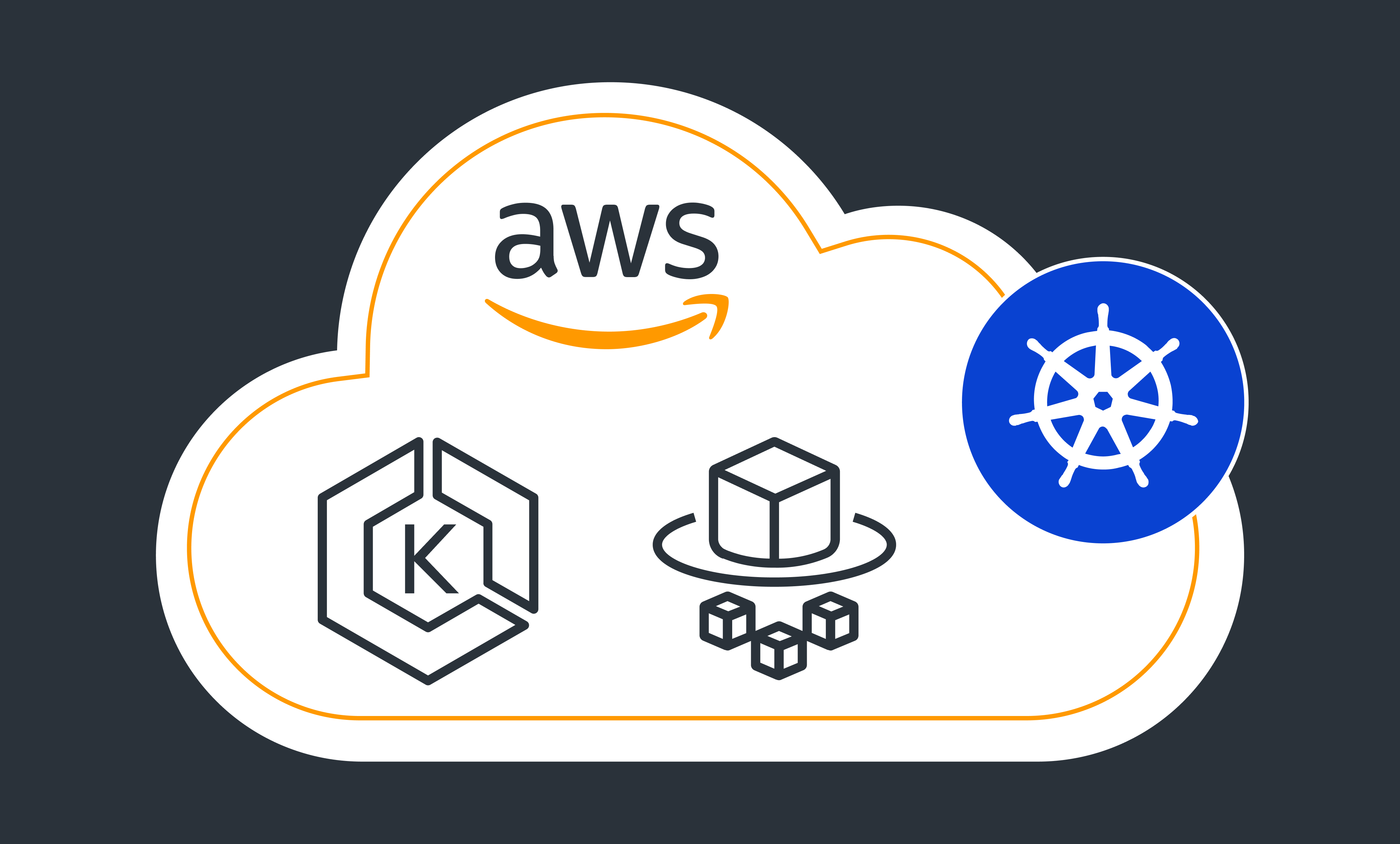Day_9 Simplified Guide to AWS EKS Deployment with Terraform
 Nehal Ingole
Nehal Ingole
Introduction
Amazon Elastic Kubernetes Service (EKS) is a managed Kubernetes service provided by Amazon Web Services (AWS) that makes it easy to deploy, manage, and scale containerized applications using Kubernetes. In this blog post, we'll walk through the process of setting up an EKS cluster on AWS using Terraform, a popular infrastructure as code tool.
Why Terraform?
Terraform enables you to define and provision infrastructure using a declarative configuration language. It's particularly well-suited for managing cloud resources like those on AWS, as it allows you to codify your infrastructure requirements and manage them efficiently.
Prerequisites
An AWS account.
Terraform installed on your local machine.
Basic familiarity with Kubernetes concepts.
Step to create EKS
Certainly! Let's break down the code provided in the blog post and explain each line:
Step 1: Set up IAM Roles and Policies
provider "aws" {
region = "us-west-2" # Change to your desired region
}
- This line configures the AWS provider for Terraform and specifies the AWS region where the resources will be provisioned.
resource "aws_iam_role" "eks_service_role" {
name = "eks-service-role"
assume_role_policy = data.aws_iam_policy_document.eks_service.json
}
- This block defines an IAM role named "eks-service-role" that will be assumed by the EKS service. The
assume_role_policyattribute specifies the trust policy for the role.
data "aws_iam_policy_document" "eks_service" {
statement {
actions = ["sts:AssumeRole"]
principals {
type = "Service"
identifiers = ["eks.amazonaws.com"]
}
}
}
- This block defines a data source that represents an IAM policy document. It specifies the permissions that the EKS service will have by allowing it to assume the IAM role.
resource "aws_iam_policy" "eks_policy" {
name = "eks-policy"
description = "Allows necessary permissions for EKS cluster"
policy = data.aws_iam_policy_document.eks_policy.json
}
- This block creates an IAM policy named "eks-policy" that defines the permissions required for the EKS cluster. The policy document is sourced from the previously defined data source.
data "aws_iam_policy_document" "eks_policy" {
statement {
actions = ["eks:*"]
resources = ["*"]
}
}
- This block defines another IAM policy document that grants permissions to perform any action (
eks:*) on any resource (*), effectively granting full permissions for EKS operations.
resource "aws_iam_role_policy_attachment" "eks_policy_attachment" {
role = aws_iam_role.eks_service_role.name
policy_arn = aws_iam_policy.eks_policy.arn
}
- This block attaches the IAM policy created earlier to the IAM role, allowing the EKS service to assume the role and perform operations defined in the policy.
Step 2: Create the EKS Cluster Configuration
module "eks_cluster" {
source = "terraform-aws-modules/eks/aws"
cluster_name = "my-eks-cluster"
cluster_version = "1.20"
subnets = ["subnet-12345678", "subnet-87654321"] # Your subnets
vpc_id = "vpc-0123456789abcdef0" # Your VPC ID
node_group_name = "my-node-group"
node_group_desired_capacity = 2
node_group_min_size = 1
node_group_max_size = 3
node_group_instance_type = "t3.medium" # Change to your desired instance type
node_group_volume_size = 20
node_group_key_name = "my-key-pair"
node_group_security_groups = ["sg-0123456789abcdef0"] # Your security group
node_group_subnet_ids = ["subnet-12345678", "subnet-87654321"] # Your subnets
}
- This block defines a Terraform module that provisions an EKS cluster. It specifies various configuration parameters such as cluster name, version, subnets, VPC ID, node group details, instance type, security groups, and subnets.
Step 3: Deploy the EKS Cluster
terraform init
terraform apply
- These commands initialize Terraform and apply the configuration, provisioning the resources defined in the Terraform files.
Step 4: Configure kubectl
aws eks --region <region> update-kubeconfig --name <cluster-name>
- This command configures
kubectlto communicate with the newly created EKS cluster by updating the kubeconfig file with the necessary authentication and endpoint information.
Step 5: Verify Cluster Status
kubectl get nodes
- This command verifies the status of the EKS cluster by listing the nodes (compute instances) that are part of the cluster. It confirms whether the cluster is up and running successfully.
Conclusion
In this guide, we've demonstrated how to deploy an AWS EKS cluster using Terraform. By following the steps outlined, you can efficiently set up a managed Kubernetes environment on AWS. Leveraging Terraform's infrastructure as code approach, we defined our cluster configuration and deployed it seamlessly. With AWS EKS and Terraform, you can streamline cluster management, enabling rapid deployment and scaling of containerized applications. Embrace this simple, scalable solution for your cloud-native projects and unlock the power of Kubernetes on AWS.
Connect with us:
Hashnode: https://hashnode.com/@Nehal71
Twitter : https://twitter.com/IngoleNehal
GitHub :- https://github.com/Ingole712521
Subscribe to my newsletter
Read articles from Nehal Ingole directly inside your inbox. Subscribe to the newsletter, and don't miss out.
Written by

Nehal Ingole
Nehal Ingole
🚀 Greetings World! 🌐 Meet a dynamic Frontend Developer, UI/UX Designer, and avid explorer of Cloud & DevOps realms! Uncover the journey of a professional deeply passionate about crafting seamless user experiences, designing visually stunning interfaces, and navigating the cloud with a DevOps mindset. 🔧 Skills Snapshot: Frontend Mastery: HTML, CSS, and JavaScript expert, specializing in React, Angular, and Vue.js. Design Wizardry: Proficient in wireframing, prototyping, and Adobe Creative Suite and Figma for captivating designs. Cloud Maestro: Fluent in AWS, Azure, and Google Cloud Platform, adept at architecting scalable solutions. DevOps Guru: Skilled in Docker, Kubernetes, Jenkins, and Git, contributing to efficient development workflows. 🔗 Let's Connect: Open to collaborating on exciting projects and sharing industry insights, I invite connections for networking or discussions. Reach out for potential collaborations. 📧 Contact Me: GitHub: GitHub Profile Email: nehalingole2001@gmail.com Mobile: 7397966719 Figma: Figma Profile Twitter: Twitter Profile HashNode: HashNode Profile LinkedIn : LinkedIn Profile